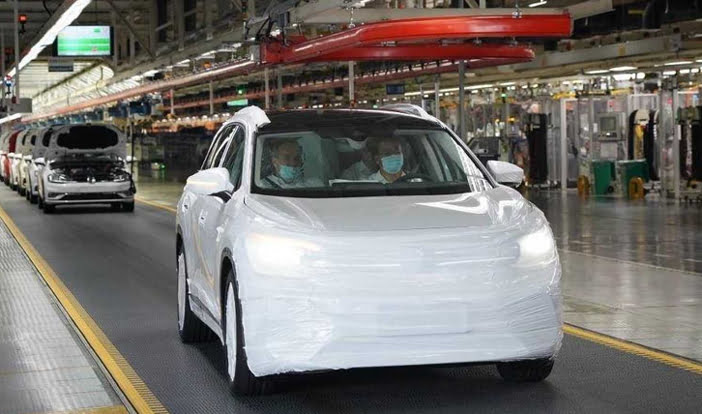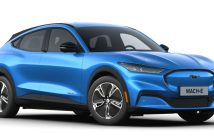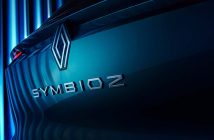+++ Volkswagen will pay a 48 % premium to buy out the minority shareholders of premium division AUDI . It holds already 99.64 %. “Volkswagen announced and specified that it has set the cash settlement to be paid to the minority shareholders in return for the transfer of their shares at €1.551.53 per share”, the Audi carmaker said. This compares with a share price of €1.050 apiece on Tuesday and amounts to a purchase price of €237 million for the 152.749 outstanding Audi shares. The transfer will be passed at Audi’s next annual general meeting, which the carmaker said is expected to take place in July or August. +++
+++ CADILLAC swung for the fences with the CT6 as it featured a unique rear-wheel drive platform and an exclusive twin-turbo 4.2-liter V8 engine. The engine, known as the Blackwing, was installed in the range-topping CT6-V and was set to be shared with a handful of other Cadillacs. However, fate intervened and the engine became an orphan as the CT6 was axed in North America. In the early 2010’s, General Motors (GM) felt Cadillac was finally ready to offer a flagship sedan. This led to the development of the Omega platform and the CT6 which debuted in 2015. While the Omega platform will die with the CT6, that wasn’t supposed to happen. Instead, there were concrete plans for a production version of the Escala concept as well as a large SUV that would be much more civilized than the Escalade. This car would have shared engines with the CT6 (including the Blackwing) and it is likely the production Escala would too. However, the world was changing and consumers wanted SUVs instead of sedans. This had a big impact on Cadillac as Omega-based cars suddenly didn’t make sense. This had a ripple effect as one insider explained, “If you didn’t have the sedans, the SUVs got more and more expensive. At some point, financially, it just wasn’t a good strategy, so one by one, those Omega derivatives disappeared, and in the end, the CT6 was left all by itself”. As all of this was going on, development of the Blackwing engine continued. It’s surprising the V8 actually made it into production because it was a costly endeavor as 1 source estimated GM spent approximately $16 million on its development. That’s obviously a bad return on investment as Cadillac only built 800 cars with the engine. This equates to $20,000 per vehicle and something the company could probably never justify even with the CT6-V’s near 6-figure price tag. +++
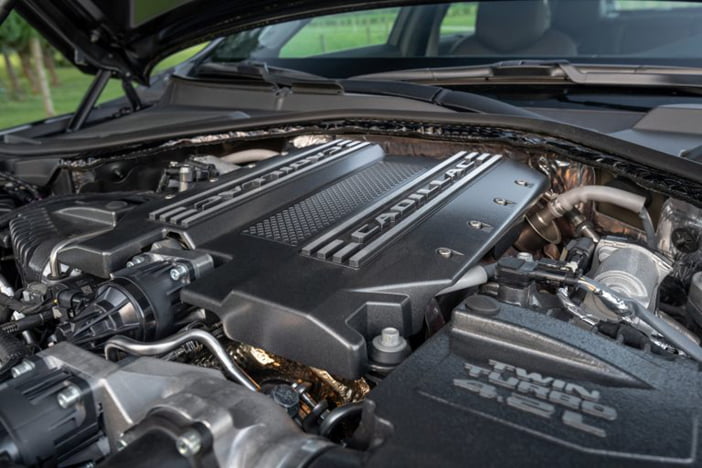
+++ Tesla will buy COBALT from Glencore, the world’s biggest miner of the metal, as the automaker looks to avoid a future supply squeeze on the key battery component, a person familiar with the matter said. The contract will help Tesla shore up its cobalt supply for new plants in China and Germany, said the person, who asked not to be identified as the details are private. The opening of Tesla’s gigafactory in China this year has helped propel its shares to a record, as investors turn bullish on Elon Musk’s ambition to transform the company into a global mass-market automaker. While there is enough cobalt supply for now, demand is expected to surge in the coming years as Tesla expands in China and Europe and automakers from Volkswagen Group to BMW Group roll out fleets of EVs. Warnings about long-term shortages caused cobalt prices to spike in 2017 and 2018, prompting Musk to work on reducing Tesla’s reliance on the metal. Even so, the accord signals that the metal will remain key to the company’s expansion over the next few years. The deal could involve Glencore, headquartered in Switzerland, supplying as much as 6.000 tons of the metal a year for lithium ion batteries used in electric cars, the person said. Executives from the 2 companies had previously been talking terms for Glencore to supply raw materials for vehicles being produced at Tesla’s car facility in Shanghai, people familiar with the matter said in January. The Financial Times earlier reported details of the agreement to sell material for use at Tesla’s new factories. The accord is in line with other recent contracts the miner has struck, including a 4-year deal in February to supply as much as 21.000 tons to battery producer Samsung. Glencore last year agreed multi-year plans to sell about 30.000 tons of cobalt to SK Innovation and at least 61.200 tons to China’s GEM. BMW also agreed to buy cobalt directly from Glencore’s Murrin Murrin mine in Australia. With Tesla’s China plant expected to manufacture 1.000 to 3.000 cars per week, that would translate to about 1.200 tons of cobalt demand annually at full capacity. LG Chem and Contemporary Amperex Technology (CATL) have agreed to supply batteries for the Shanghai factory. Tesla’s German plant near Berlin may produce about 500.000 vehicles a year once complete. While Glencore is in a prime position to benefit from a boom in EV sales, it has so far struggled to make that happen. The company booked losses last year related to cobalt after prices collapsed in mid-2018 from too much supply. In November, it shut one of its cobalt mines in the Democratic Republic of Congo for a maintenance program that could last 2 years. After customers reneged on contracts in response to the price slump, Glencore spent last year locking in new long-term deals throughout the EV supply chain. Direct deals with miners are rare in the auto sector, and the agreements between Glencore, Tesla and BMW signal automakers are concerned about securing sufficient supply from ethical sources. Almost 75 % of the world’s cobalt comes from the DRC and as much of 20 % of the country’s output is produced at informal makeshift mines where fatalities and human-rights abuses are commonplace. The nation is pushing for more influence over the supply chain and a bigger say in pricing. For example, it’s moving to centralize trading cobalt output that is produced by about 200.000 artisan miners. Tesla has begun “to engage directly with smelter and mines”, including in the DRC, on standards around ethical and responsible production, it said in a 2019 Impact Report released last week.
The work comes as Tesla expands global vehicle production and extends supply chains, the report said. The company said it will support sourcing of the metal from the DRC if it can be assured raw materials are coming from operations that meet social and environmental standards. +++
+++ Consumers can’t seem to get enough SUVs, but it appears the FORD Edge could be on the chopping block. The plan to build the next-generation in Canada will be cancelled and Ford will shift production of the Lincoln Nautilus to China in 2023. The changes could doom Ford’s Oakville, Ontario plant which also lost the Ford Flex and Lincoln MKT last year. If the plant were to close, it would spell the end of Ford vehicle production in Canada and could result in the loss of approximately 4.600 jobs. Canada’s Unifor union hasn’t been notified of the possible change, but pointed out the union’s contract expires in September. The rumored death of the Edge is interesting as next-generation model was reportedly slated for 2023 on a new platform. However, Edge sales have been modest in the United States as the company only sold 138.515 units last year. For comparison: Ford sold 241.388 Escapes (Kuga in Europe) and 184.653 Explorers (after a disastrous launch) in 2019. While the Edge sells in decent numbers, many of them are bought by fleet customers and the general thinking is Ford has enough SUVs to fill the gap left by its possible demise. The company also has a number of new models on the horizon including the Bronco and Bronco Sport. While the Edge will reportedly die in North America, it will still survive in China. +++
+++ GENERAL MOTORS ‘ top executive struck an optimistic note about U.S. new vehicle demand despite the coronavirus pandemic, and the ability to sell electric vehicles at a profit, especially in China. “We’re cautiously optimistic about U.S. new vehicle demand”, chief executive officer Mary Barra said at a virtual press event. “We’re hopeful that we’ll have a recovery because that’s good for everybody”. After 2 months of lost production as carmakers shuttered plants to halt the spread of Covid-19, U.S. new vehicle dealers are running low on inventory, especially in the high-margin pickup segment that is dominated by GM, Ford and Fiat Chrysler Automobiles. Barra said she expects GM will be “running full out” at plants that make those popular vehicles “in the near term”. Consultancy AlixPartners has predicted that major automakers face a “profit desert” as they invest heavily in developing electric vehicles despite consumers’ ongoing preference for gas-guzzling cars, especially in the U.S. market. When asked about that prediction, Barra said: “We are very excited with the portfolio of EVs we have coming. We are going to continue on that path. We have a strong future ahead and I don’t see that desert”. Industry data last week showed that China’s auto sales in May rose 14.5% from the same month a year earlier, the second consecutive monthly increase as the world’s biggest vehicle market recovers from lows hit during coronavirus lockdowns. Barra said that GM’s lineup of vehicles, including its upcoming EV models, position the automaker for growth in China. “I think we’re going to be in a sweet spot where there is a growth opportunity in that market”, she said. “We’re looking for profit and volume growth in China”. +++
+++ Organisers of the GOODWOOD FESTIVAL OF SPEED and the Goodwood Revival have confirmed that the 2020 iterations of both events have been cancelled as a result of the ongoing Covid-19 pandemic. In March, Goodwood announced that the Festival of Speed (originally scheduled for July) had been postponed. But now it has been confirmed that it won’t take place this year at all, in line with rules on social distancing and large crowds gathering. It had been originally hoped that the event could be moved from its 9-12 July slot to later in the summer. The Goodwood Revival meeting was intended to go ahead from 11 September, but on review by organisers has now also been cancelled with no new 2020 date to be confirmed. All tickets bought for both events in general admission areas, grandstands and hospitality will be valid for the 2021 iterations of the Festival of Speed and Revival, but customers will be eligible for refund should they so wish. Customers with tickets and fans are also being invited to join the relaunched Goodwood Supporters’ Association, with lifetime membership available for a one-off contribution. Ticket holders for the 2020 events can opt to transfer part or all of their refund towards association membership. Members will have an engraved nameplate installed at the Goodwood motor circuit or within the Festival of Speed parkland in return, a tree planted in the new woodland area planned to the north-west of the circuit and a unique Goodwood Supporters’ Association pin. The Duke of Richmond, owner of the Goodwood Estate, said: “For a business like ours, which is all about bringing people together to enjoy the things they love, social distancing has had an unavoidable impact on our ability to operate. The Festival of Speed and Revival events will return in 2021 and, in the meantime, we are delighted to give our incredibly loyal members and dedicated followers a unique opportunity to increase their connection to Goodwood by becoming part of our new Goodwood Supporters Association initiative. In addition, we are still hoping that we may be able to keep the flame alive with a ‘behind closed doors’ motorsport occasion later this year for motorsport fans and enthusiasts worldwide to enjoy at home and look forward to making an announcement in the coming weeks”. +++
+++ GREEN NUMBERPLATES on electric vehicles will be rolled out from autumn, the British government has announced. The move, which is part of the government’s plans to achieve net-zero emissions by 2050, is intended to make EVs more easily identifiable, helping local authorities implement new policies to incentivise people to buy EVs. Transport secretary Grant Shapps said: “Green numberplates could unlock a number of incentives for drivers and increase awareness of cleaner vehicles on our roads, showing people that a greener transport future is within our grasp”. 2 examples given by the fovernment are cheaper parking and free entry into zero-emissions zones. The plates will be have a green flash on the left-hand side. The possibility of green numberplates for EVs was first reported in October last year, when a consultation on the project launched, which is now complete. +++
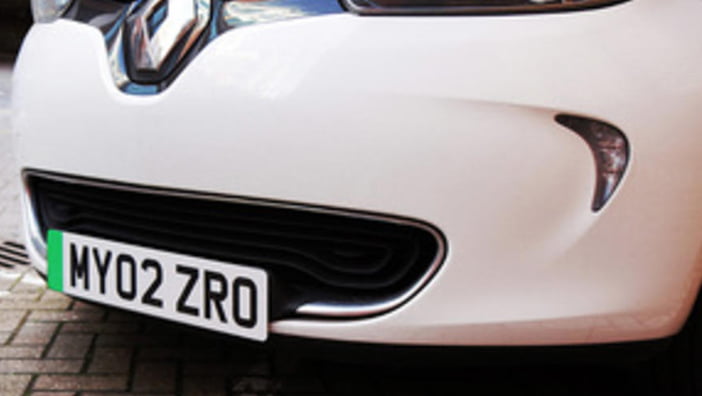
+++ Start-up H2X wants to resurrect Australia’s car manufacturing sector by putting together a full line of hydrogen-powered cars by the middle of the 2020s. It announced its plans this month, but it pointed out its team has been working on the project since 2015. Based in New South Wales, the eastern Australian state Sydney is located in, H2X is an independent, privately-funded company that aims to tailor zero-emissions driving to the unique needs of motorists Down Under. Australia is a vast nation the size of a continent and the middle of it is largely empty, so gas stations are few and far between outside of major urban centers. The odds of finding a fast-charger with an airconditioned Starbucks conveniently propped up next to it in the middle of the Outback are even lower. That’s why H2X is focusing on hydrogen technology, which is better suited to driving long distances than electric technology. H2X claimed it has already developed several prototypes, though it only released design sketches. One of the models it focused on is a 255 hp crossover named Snowy equipped with a 60 kWh fuel cell. Additional technical details are vague and likely haven’t been finalized yet, but the firm explained it wants its cars to offer “a balance between hydrogen energy and kinetic and externally-charged electricity using an advanced hybrid system which can determine the most efficient approach for a given journey”. What the company described sounds like a hydrogen-electric plug-in hybrid drivetrain with regenerative braking. When the tanks are full, the onboard fuel cell uses hydrogen to generate electricity and send it to the wheels. If they’re empty, or on short urban trips, the driver can charge the battery pack by plugging the car into a charging station, rely on it for power and bypass the fuel cell altogether. Like much else, information about H2X’s future products remain under wraps. It released design sketches depicting a delivery van and a taxi, and hinted it sees a great amount of potential in the electrification of bigger vehicles like semi trucks and buses. The company’s business plan calls for initially sourcing vehicle architectures from a third-party based outside of Australia; its identity wasn’t revealed. It added that its powertrain platform has already been developed, and it’s currently found in vehicles operating in Asia; here again, we don’t know who makes them. From there, it will install body panels and interior parts manufactured in Australia. Looking ahead H2X plans to increase the amount of local content in its cars to 80 % by 2025, one year after it hopes to offer a full line-up of cars. H2X’s executive team includes CEO Brendan Norman, who has previously help top positions at BMW, the Volkswagen Group, Infiniti and England-based hydrogen car hopeful Riversimple. Chris Reitz is its lead designer and the head of its European division; his resume includes leading design for the Fiat Group plus positions at Volkswagen and Nissan. Peter Zienau, who worked as the head of global EV programs for General Motors, is its CTO. Most of the other names on its roster have decades of experience in the automotive industry. While that doesn’t guarantee a resounding success, it should at least boost the confidence of investors. Startups often trumpet ambitious goals and H2X is no different. It plans to create 5.000 jobs in Australia as it ramps up production in the next 5 years and hopes to indirectly generate up to 25.000 additional jobs through what it defines as “an Australian-oriented supply chain”. The catch is that the hydrogen refueling infrastructure is no better in Australia than in the United States. H2X is realistic enough to take this problem into account. It noted the Snowy could hit the roads in 2022 or 2023, but warned this timeline could be affected by how quickly the nation’s network of refueling stations develops. If everything goes according to plan, it will show the first running prototypes in November 2020, begin customer test drives in April 2021 and launch volume production in July 2021. Crippled by shifting buyer expectations and competition from foreign companies, Australia’s car manufacturing sector unceremoniously collapsed in the second half of the 2010s. Ford ended 91 years of local manufacturing in 2016, while Toyota and General Motors-owned Holden closed their Australian plants the following year. The latest blow to the country’s automotive industry came in 2020, when General Motors confirmed the ax will fall on the Holden brand by the end of 2020. Australia’s car market is at least as pick-up obsessed as America’s. The bestselling model Down Under is the Toyota Hilux. +++
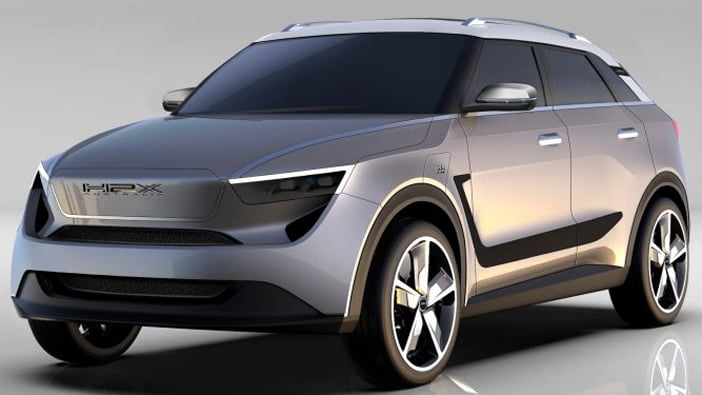
+++ The HYUNDAI Motor Group will set up South Korea’s biggest driving center by the first half of 2022, offering various driving courses as well as education programs and leisure activities. South Korea’s No. 1 auto company said it has joined forces with Hankook Tire & Technology to use its soon-to-be-built proving ground in Taean to use the tire company’s test tracks for Hyundai’s driving courses. “Hyundai Motor Group’s driving experience center will use most of the test tracks at the Hankook Tire & Technology’s proving ground and also build a separate two-story building”, the automaker said in a release. A Hyundai Motor spokesman explained that the automaker will pay the tire company to operate the center. Dubbed the HMG Driving Experience Center, the facility will have 8 courses where drivers can test out the group’s Hyundai, Kia and Genesis vehicles. The courses include high speed tracks as well as a slalom course, where the driver has to navigate around traffic cones, and an off-road course consisting of slopes, pebbles, sand and a waterway. The center will do more than just offer driving experiences. It will also provide education programs where professional instructors can teach driving skills including how to utilize the latest high-tech functions installed in the cars. There will also be a lounge big enough to accommodate 300 people and an exhibition space where the carmaker will showcase its latest auto technology and brand story. Hankook Tire’s proving ground in Taean is scheduled to finish construction in the first half of next year. The design of the test tracks has been outsourced to Applus Idiada, a multinational engineering company based in Barcelona, Spain, to make it suitable for testing not only internal combustion engine vehicles, but also electric ones and autonomous ones. The Hyundai Motor Group, the world’s fifth largest carmaker by sales, will be the third car company in Korea to open its own driving center. BMW Korea in 2014 built its driving center in Yeongjong Island, Incheon, with an initial investment of 77 billion won ($63.5 million). It later announced a plan to invest 12.5 billion won to expand it. The facility is 290.000 square meters. In 2018, Mercedes-Benz Korea also rebranded Samsung’s Everland Speedway in Yongin, Gyeonggi to make it an AMG Speedway. “The group’s driving experience center is expected to develop new auto culture where anybody could have fun and easily learn how to drive through the center’s various education and experience programs”, Hyundai said in a statement. +++
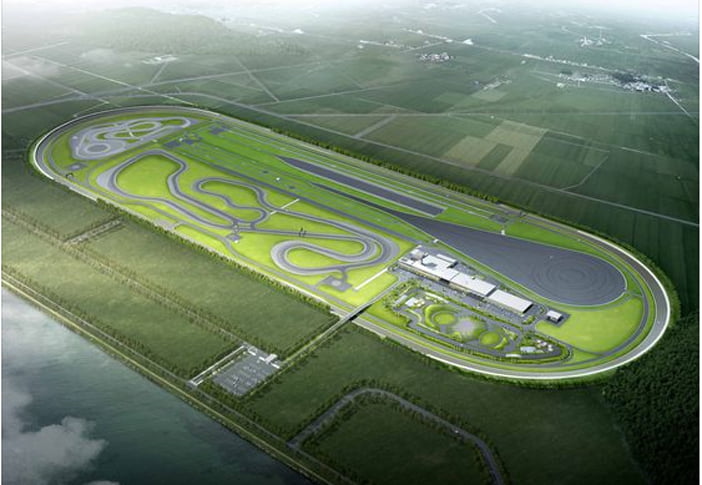
+++ Last month, Nissan unveiled restructuring plan that called cutting costs, closing plants and eliminating models. Reports indicated INFINITI would be hard hit by the changes and they could eventually drop rear-wheel drive models as part of the switch to a “Nissan plus” strategy. Fast forward to today and Infiniti’s new chairman, Peyman Kargar, has elaborated on what to expect. Kargar said Infiniti will transition to a “sustainable business” which is profitable and offers an assortment of premium products. While a number of Nissan models will be dropped, Kargar said Infiniti is “not going to shrink or reduce the lineup”. However, it’s worth noting the company has already phased out the Q70. Kargar also teased there are a “lot of good things are in the pipeline that are not visible today”. He didn’t elaborate, but the company is preparing to introduce the QX55 crossover coupe later this year. Speaking of upcoming models, the executive confirmed they will offer multiple powertrain options including internal combustion engines, electric vehicles and “high-performance” e-Power variants. The company has previously described the latter as gas-powered EVs which will have a 1.5-liter 3-cylinder petrol engine and a small battery pack with a capacity between 3.5 and 5.1 kWh. The petrol engine will generate electricity for electric motors which will have combined outputs ranging from 251 hp to 435 hp. However, unlike plug-in hybrids, the e-Power models won’t have charging ports. The idea is kind of crazy, but Infiniti has previously said gas-powered EVs combine the best parts of electric and ICE vehicles. In particular, the company has said they’ll offer instantaneous acceleration without recharging or range anxiety. Kargar didn’t talk about the more controversial elements of the plan, but he noted Infiniti will have closer ties to Nissan. This has fans worried as future Infiniti models are expected to share platforms and powertrains with Nissan vehicles. This could potentially result in the Q50 being heavily based on the Nissan Altima. +++
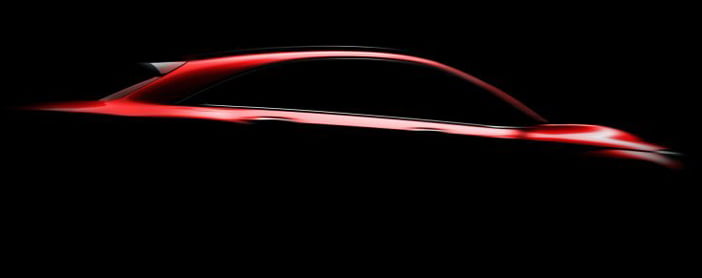
+++ LAMBORGHINI may have taken its time in developing a proper challenger to the likes of the Ferrari LaFerrari, Porsche 918 and McLaren P1, but they finally tapped into this niche with the Sian FKP 37. Presented last year, the hybrid supercar, which is also the company’s most powerful street legal model ever, is now understood to be joined by an open variant that will, in all likelihood, bear either the Roadster or Spyder moniker. It’s unknown if it will feature a folding soft top or launch without a roof that would protect the cabin and its occupants from the elements. Guess we’ll have to wait a bit longer to find out when they present it, which should be sooner rather than later, as this variant is believed to have been sold out already. The production run is another unknown, although we would expect it to launch in as many, or even less, units as the coupe, which was limited to 63. Regardless of its configuration, it should be practically as quick as its fixed-top sibling that does the 0-100 km/h in under 2.8 seconds and tops out at 350 km/h. Powering it will be a 6.5-liter naturally aspirated V12 sourced from the Aventador, as both models share the same platform, alongside the 48 volt electric motor integrated into the transmission and supercapacitor. The electric unit adds 34 hp to the total output that stands at 819 hp. The Sian FKP 37 started at over €2 million plus taxes and I expect the Roadster/Spyder to be even pricier. +++
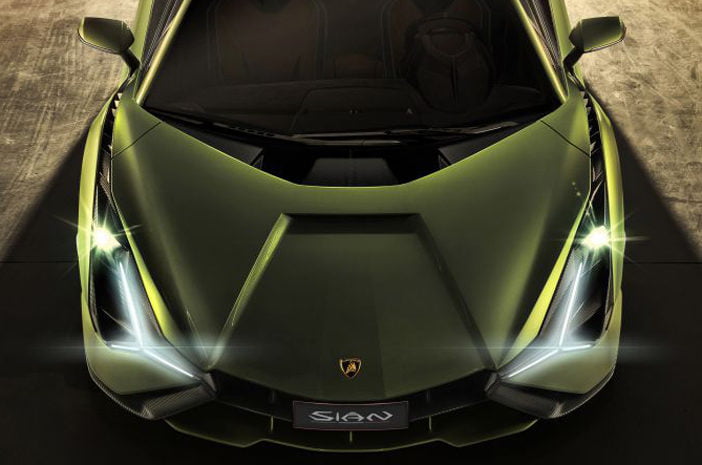
+++ Volkswagen has started production of the all-new NIVUS crossover coupe at its Anchieta plant, in São Bernardo do Campo, Brazil. It’s a big deal for Volkswagen do Brasil as the Nivus is the first model developed in Brazil that will be produced and sold in the European market. While the Nivus built in Brazil will be exported to countries in Latin America, the subcompact crossover will also enter production next year in Pamplona, Spain. The location is not surprising as the Pamplona factory also makes the Polo and the T-Cross, both closely related to the Nivus. According to Volkswagen do Brasil, about 30 people from the Spanish team are involved in the Nivus project and some of them have been visiting the facilities in Brazil to learn more about the development of Nivus before European production begins. Interestingly, the Nivus was developed without the need for a physical prototype in any of its phases, with designers and engineers using virtual reality and augmented reality instead. “Today we start production of the Nivus and we are the first of the VW Group to develop a 100 % digital project. As a result, we reduced the project time by 10 months, by performing tests and validations virtually, and made the processes more efficient and with significant cost savings”, said Pablo Di Si, Volkswagen president and CEO for Latin America. The Nivus is made at the Anchieta plant alongside the Polo and Virtus sedan, with all 3 models sharing the MQB-A0 platform. To prepare the factory for the new model, Volkswagen bought 419 new equipment including 90 state-of-the-art robots and a new ‘Extra Large’ press. The facility was also expanded by 24.000 square meters and now totals 105.000 square meters. The Nivus will go on sale in Brazil in the coming weeks, followed by Argentina later in the year and other South American markets in 2021. From the second half of next year, it will also become available for European customers. +++
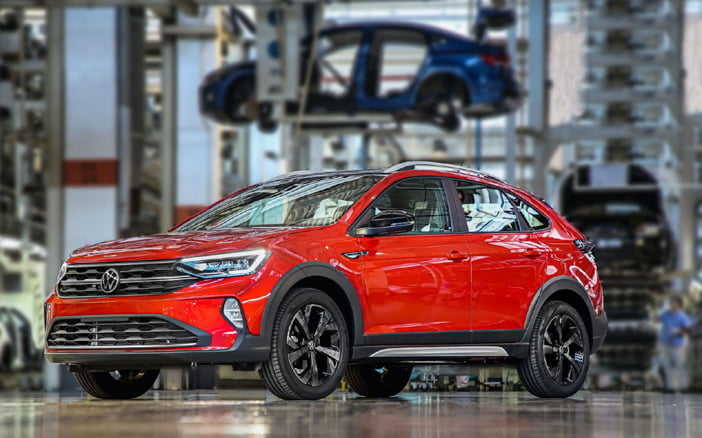
+++ Tesla has signed a 3-year pricing deal with Japan’s PANASONIC relating to the manufacture and supply of lithium-ion battery cells at the Gigafactory in Nevada, the electric carmaker disclosed in a filing. Tesla and Panasonic have been reported to be in talks to expand the battery joint venture’s capacity. Panasonic hinted in May that it was working to develop new batteries with Tesla, possibly with higher capacity. Tesla said the deal, signed last week, sets the terms for production capacity commitments by Panasonic and purchase volume commitments by Tesla over the first 2 years of the agreement. Tesla also amended the general terms and conditions of its partnership with Panasonic, modifying the term to expire 10 years after Panasonic achieves certain manufacturing milestones. Panasonic is no longer Tesla’s exclusive battery supplier, but has been able to turn around the U.S. joint battery business as demand for Tesla’s electric cars soar. Last month, Tesla reported its third consecutive quarterly profit despite the economic impact of the coronavirus pandemic, taking investors by surprise. +++
+++ PORSCHE won’t follow the recent return of naturally aspirated engines to the 718 Boxster and 718 Cayman with a turbo-free 911 Carrera, its sports car boss has revealed. Frank-Steffen Walliser admitted that it’s “not really feasible” to take Porsche’s new 4.0-litre engine (which is found in the Cayman GT4 and Boxster Spyder and detuned for use in the Cayman GTS and Boxster GTS) and spend money on rotating it 180 degrees for use in the rear of the 911. When asked if there’s a desire for natural aspiration to return to the 911 in non-GT form, Walliser said: “You ask if there’s a desire. I will not deny that. But the reality tells me it will not happen. I would love to do something like that, but the research and development costs are too high to develop such an engine for the Carrera”. Turbocharger-free power will reappear in the next 911 GT3, which is expected to be shown in the coming months. Walliser also spoke of the much-discussed hybrid 911, which is due later in the 992 generation’s life. Porsche has a number of technical hurdles to clear before it can launch this model, with the “biggest burden” being managing the additional weight of electric powertrain components. Space is another issue, said Walliser: “We have to package everything, because the car is relatively small. We don’t want to give up the 2+2 layout, the architecture or the shape of the car, because these are part of the 911 story”. ‘Return on investment’, meaning the balance of the compromises versus the end result of greater power and efficiency, is a focus for Porsche with the hybrid 911. +++
+++ I have searched for the information, but I was not able to find how many car models British customers can choose from. I’d bet there are a few hundred to pick, but there is no way to tell that for sure. That said, you can imagine that being among any list there can be either very good or very bad. The Tesla Model S was in the regrettable side as one of the 15 least RELIABLE cars in the UK, according to Carwow. Warrantywise helped by providing the frequency of warranty claims to calculate how likely it is for the car to present issues. In other words, how many claims happened in a given time period. Carwow mentioned the last 10 years, so that was probably the period chosen in this calculation. In that sense, a car that had 10.000 claims is more reliable than one that had 100.000 in the same period. I wonder how Carwow corrected the fact that there are probably fewer units of the Tesla in the United Kingdom than the Ford Galaxy, the 12th on the list. Perhaps with the frequency of warranty claims per car sold? That number was then multiplied by the average cost per claim to create the ranking. According to Carwow, the lower on the list the car is, the more it exposes its owner to issues. I did not understand the logic. Classic frequency definition states it is the number of occurrences a repeating event has per unit of time, or one divided by that number. The larger the number that divides one, the lower the result is. That said, it makes sense to have the worst cars in lower positions on the list. But why multiply that by the average cost per claim? Imagine this example: car A has 10 claims and car B has 100 complaints, which obviously means it has more defects. If you divide 1 by 10, you’ll get a frequency of 0.1 for car A. If you divide 1 by 100, car B will have a frequency of 0.01. If both cars have the same average claim cost (€1.000 for example), car A will get 100 as a result and car B, 10. The lower one on the list really is the least reliable. But what if car B has an average claim cost of €10.000? Both cars would get 100 on the list. Yet, car A has less and cheaper claims. That would be a massive distortion. Trusting the calculation without a good understanding of how it was made is an act of faith. Although both Carwow and Warrantywise are reputable firms, we would love to see a more extensive explanation. Not on the results, but the methods. According to them, the Model S is the 15th on the list, with a €1.322 average claim cost and €4.402 for its most expensive warranty claim, related to its air suspension. Consumer Reports has already stated the Model S is not a very reliable vehicle, but it also says the Model X is much worse than the Model S. +++
+++ RENAULT plans to cut 1,500 engineering jobs in France, a trade union source told. The engineering job cuts are part of cost savings plans that Renault announced last month aiming to find €2 billion in savings over the next 3 years. The carmaker had planned to cut 15.000 jobs worldwide, including 4.600 in France. +++
+++ RIMAC has confirmed that its second electric hypercar, a production version of the C_Two concept, is on track for customer deliveries in 2021. Rimac revealed the C_Two at Geneva motor show in March 2018. Shortly after, head of sales Kreso Coric told that the production model was close to being sold out, with nearly all 150 examples already spoken for. The final production car was due to be revealed at Geneva motor show in March, but following the cancellation of the show due to coronavirus, Rimac has now confirmed that the final model and official name will be announced later this year. Ahead of its launch, Rimac has opened a new production facility in Veliko Trgovisce, Croatia, which it says will “accelerate the production of C_Two prototypes necessary for final validation and crash testing for worldwide homologation”. Production times will come down from 10 weeks per car at the current ‘nest production’ site to 5 weeks, which will eventually allow the firm to build up to 4 production-spec cars per month. 4 prototypes of the C_Two have been completed, but an additional 13 are needed for crash testing and homologation purposes. Once this process is complete, Rimac will build 10 ‘pre-series’ cars, before the reveal. Company founder and CEO Mate Rimac said: “We have worked hard to bring the C_Two to the stage where it is now, and we want our customers all over the world to be able to experience the thrill of a 1.900 hp all-electric hypercar. The only way we can do that is through a strict crash testing process requiring many different prototypes, each of which has its own purpose. While some cars will go straight from the production line to the crash testing facility, others will be used for different validation tests before hitting the wall. Only a handful of prototypes will not be crashed during this program. As we are ramping up prototype production, this new line is an absolutely necessary investment to streamline the process, and it’ll help us as we begin to deliver customer cars from next year”. The C_Two is expected to be one of the fastest production cars in the world, with a claimed 0-100 kph time of 1.9 seconds. The model’s performance puts it on par with the Tesla Roadster, which is claimed also to do this benchmark sprint in 1.9 seconds. The hypercar uses a 120 kWh lithium battery. It has an electric motor at each wheel, allowing for 4-wheel drive. It uses a pair of independent single-speed gearboxes to drive the front wheels and a pair of 2-speed carbon-clutched gearboxes for the rear wheels. This allows the C_Two to make use of “its prodigious torque”, said Rimac. The car employs allwheel torque vectoring, coupled with huge 390 mm carbon-ceramic brake discs and 6-piston calipers on both front and rear axles. The largely carbonfibre model features double wishbone suspension with electronically controlled dampers and active ride height. Capable of a top speed of 420 kph, Rimac claims that new liquid-cooled thermal management systems mean the car is capable of 2 full laps of the Nürburgring at full power “with negligible drop in performance”. An inability to perform consistently is a criticism often levelled at electric performance cars. The C_Two has a claimed range of 650 kilometres on an NEDC cycle and can be charged to 80 % capacity in less than 30 minutes. The 2-seater also features Level 4 autonomous driving (1 level off full autonomy) as well as artificial intelligence. On-board systems use facial-recognition cameras to unlock the car and let the driver start it without a key. The car then attunes itself to the driver’s mood by recognising various inputs and adapts accordingly. This could be by playing soothing music or adjusting the car’s dynamics for a more pliant ride. As part of its autonomous capability, the C_Two’s systems can load selected race tracks in real time, offering guidance on racing lines, braking/acceleration points and steering inputs. The hypercar uses a carbonfibre monocoque with bonded carbon roof, integrated battery pack and rear carbon subframe. Crash structures are formed from carbon and aluminium and the body itself is carbonfibre. +++
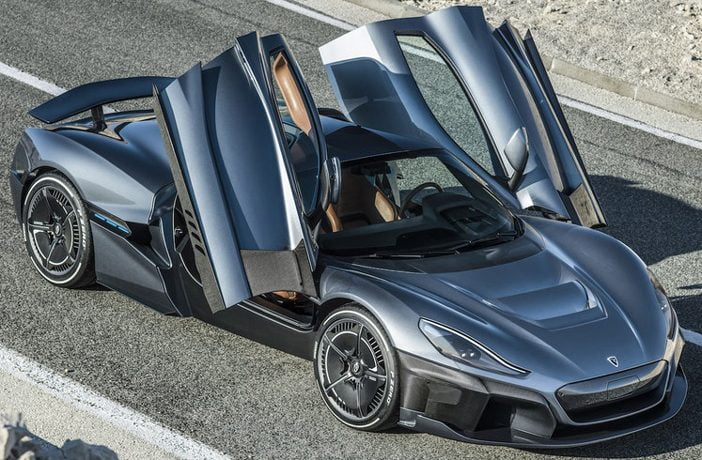
+++ Can a SELF DRIVING VEHICLE ever really be as aware of its surroundings as a human being? It would mean for computers to actually learn from past experiences and recognize patterns in order to navigate new and/or unpredictable situations. These are the types of questions that Toyota, together with the Massachusetts Institute of Technology (MIT) are trying to answer. The 2 have now released a new open dataset called DriveSeg. DriveSeg is meant to demonstrate how autonomous driving systems could perceive the driving environment as a continuous flow of visual information. “In sharing this dataset, we hope to encourage researchers, the industry, and other innovators to develop new insight and direction into temporal AI modeling that enables the next generation of assisted driving and automotive safety technologies”, said principal researcher, Bryan Reimer. “Our long‐standing working relationship with Toyota CSRC has enabled our research efforts to impact future safety technologies”. DriveSeg is available for free and can be found here. Its data consists of 2 parts: the Manual version is just under 3 minutes of high-res video captured during a daytime trip around Cambridge, Massachusetts, while the Semi-Auto version represents 20.100 video frames taken from MIT Advanced Vehicle Technologies (AVT) Consortium data. “Predictive power is an important part of human intelligence”, stated Toyota Collaborative Safety Research Center senior engineer Rini Sherony. “Whenever we drive, we are always tracking the movements of the environment around us to identify potential risks and make safer decisions. By sharing this dataset, we hope to accelerate research into autonomous driving systems and advanced safety features that are more attuned to the complexity of the environment around them”. This flow of data is said to closely resemble dynamic, real-world driving situations, allowing researchers to explore patterns as they would play out organically over time. This in turn could lead to advanced machine learning capabilities and behavioral predictions. +++
+++ SKODA is set to update its Kodiaq after nearly 3 years on sale and a camouflaged prototype of the top-rung RS variant appears to have been spotted testing ahead of an anticipated reveal later this year. The mule wears similar camouflage to a prototype of the standard Kodiaq seen last year, but its red brake calipers, larger brake discs, twin exhaust outlets and sports alloy wheels give it away as a member of Skoda’s RS performance line-up. Following in the footsteps of the updated Superb flagship, the Kodiaq is set to receive similarly subtle styling tweaks and an interior technology upgrade. Heavy camouflaging to the front and rear ends suggests the most obvious visual changes will come in the form of redesigned bumpers and light units, with Skoda’s trademark grille design carried over from the outgoing model. New features for the 2020 Kodiaq are likely to include the matrix LED headlights already seen on the new Superb, along with advanced driver aids such as predictive cruise control. Prototypes spotted so far have been towing what appears to be a dynamometer, suggesting the planned introduction of a new powertrain. The refreshed Superb was revealed last year and is available for the first time with a plug-in hybrid option. That system is also expected to make its way into the Kodiaq in due course. With a 156 hp 1.4-litre turbocharged petrol engine mated to a 1145 hp electric motor, PHEV variants of the new Superb are capable of 50 kilometres of pure electric range and a likely 7.4 seconds 0-100 kph time. The Kodiaq would not be able to match these figures due to its extra weight, but it shouldn’t be too far off. It will also be offered with the revised 2.0 TDI Evo diesel engine first seen fitted to the new Volkswagen Passat. This new unit offers improved fuel economy courtesy of a high-efficiency crank, steel pistons and reduced friction throughout. +++
+++ Volkswagen is increasing its stake in U.S. company QuantumScape by up to $200 million to boost the development of SOLID STATE BATTERY TECHNOLOGY that aims to increase the ranges of electric cars and shorten charging times, the German carmaker said. Volkswagen added that plans for a pilot plant were expected to be firmed up in the course of this year. +++
+++ SUV models are more likely than passenger cars to injure or kill pedestrians, according to a new U.S. insurance industry study which recommended design changes to improve safety. SUVs “seem to be more deadly to pedestrians than cars are”, said Sam Monfort, lead author of a study by the Insurance Institute for Highway Safety. In a crash with a traditional SUV, “the grille strikes the pedestrian’s pelvis or chest”, transferring more energy to the pedestrian’s body, said the study of 79 crashes in three Michigan cities which did not address vehicle handling. “More research will be required to see whether all of the findings hold up in a larger study”, the industry-funded group said, noting the relatively small sample size. Truck-based SUVs and car-based crossovers (CUVs) are generally larger and heavier than passenger cars, stand taller with blunter front ends, and are increasing in number and share of total vehicles on North American roads. In the study, SUVs caused more serious injuries than cars in impacts at speeds greater than 35 kph, with a higher percentage of fatalities. Annual U.S. production of SUVs has remained relatively constant over the past 10 years, at about 1 million. But crossover production has tripled over the same period to more than 6 million in 2019. “Crossovers and SUVs sit higher” than passenger cars, and have a higher center of gravity, “which can make handling less stable than in a traditional sedan”, said Sam Fiorani, who coordinated the study. +++
+++ TESLA has revealed details of a new Model S called Long Range Plus, which the firm claims is capable of 650 kilometres on a single charge. The US firm says the updates provide a 20 % improvement in range over the outgoing Model S Long Range. However, the new all-electric saloon was tested against the American EPA programme, which is slightly different to the WLTP cycle used in Europe. Due to the size of America and the vast distances between its cities, the EPA test is geared towards sustained, long-distance cruising. The WLTP cycle favours the stop-start, short-distance driving which is common to Europe. As such, I expect this 650 kilometre figure will drop slightly once the car has been homologated for the European markets. Tesla’s revisions for the Model S Long Range Plus include a lighter battery pack and electric motors, lighter seats and a range of improved manufacturing tweaks carried over from the Model 3 and Model Y. There’s also a new regenerative braking system which now engages at lower speeds, along with a fresh set of aerodynamically-efficient alloy wheels, which the company says provide a 2 % improvement to the car’s range alone. Mechanical revisions include a new transmission for the car’s front electric motor, which Tesla says provides a further two per cent improvement in range when cruising. The old car’s mechanical oil pump has been replaced by an electric unit, too. +++
+++ TOYOTA is opening up access to its virtual crash testing and human modelling software, allowing different companies to use it for free. THUMS (Toyota Human Model for Safety) is a computer programme that simulates car crashes and analyses the types of injury a human can sustain in various scenarios. Its purpose is to improve the safety of newly designed cars, systems and equipment. The programme was first launched in 2000 and has been developed over the last 20 years. Today, THUMS can replicate the effects of an impact to the skeleton, internal organs and muscle tissue across people of different genders, ages and physiques. Now, Toyota has announced it’s making THUMS free for anyone to access from January 2021. The firm hopes this will not only allow other manufacturers to use it to make their cars safer, but also that the additional feedback will allow further improvements to be made to the programme. Over 100 vehicle manufacturers and other organisations already use THUMS globally. The system has been used in the development of seatbelts, airbags and vehicle structures for reducing pedestrian injuries. In addition, vehicle safety assessment organisations are considering using the software for virtual testing. Seigo Kuzumaki from Toyota’s advanced R&D and engineering department said: “Since THUMS was launched, we’ve been making improvements and working hard to better reproduce the human anatomy and expand the variations in our models. It has become indispensable to Toyota’s efforts to develop safety technologies and vehicles. We decided to make the software freely available so that more people can use it and further improve vehicle safety across the entire automotive industry. This should help reduce traffic injuries and fatalities, creating a safer society”. The news comes after Toyota granted free access to nearly 24.000 patents relating to hybrid and electric vehicles in order to help other brands develop these types of car. +++
+++ I don’t know what VOLKSWAGEN will call the production version of the ID.Roomzz concept, but I do know what it’s going to look like. One pre-production example of the model, which could either be called ID.5 or ID.6 (depending on what VW chooses to call the coupe-like version of the ID.4, as well as the production version of the ID. Space Vizzion) was shown during a venue held at its FAW-VW production facility in Foshan, China. The event was held on June 10 to celebrate the first 2 MEB-based all-electric models rolling off the production line at that particular factory. Aside from this, we don’t have any additional information on the model. I do know it will be a battery powered SUV that will sit above the ID.4 in the range and it may or may not be sold in Europe. Last year, VW mentioned that there will be some China-only ID-badged models, and the manufacturer may have been referring to this very car. In Europe, once the ID.3 and ID.4 (which will be available in 2 body styles) will be launched, VW will probably proceed to launch the production version of the ID Space Vizzion concept. According to a recent report, the latter will first be put on sale as an estate, with a more style conscious coupe-like saloon model joining the range one year later. +++
